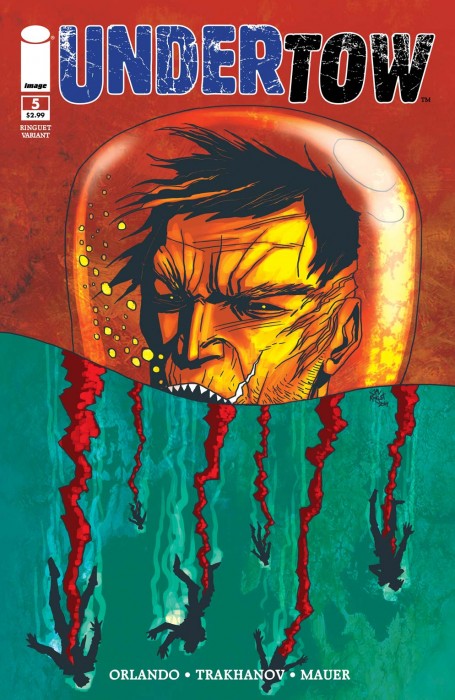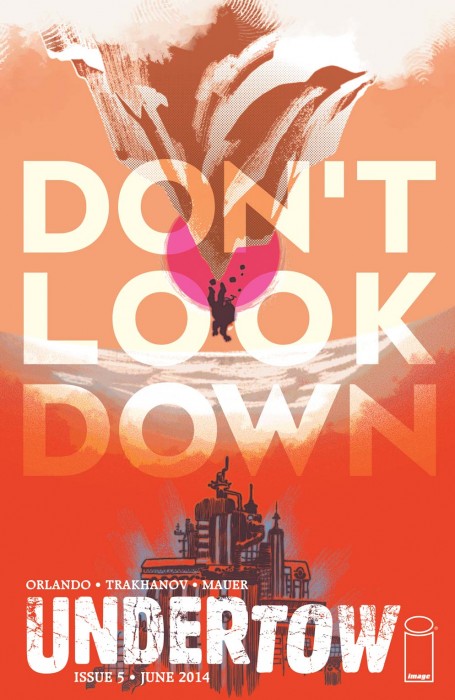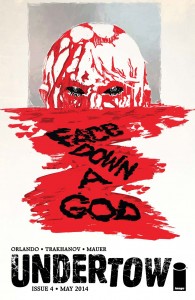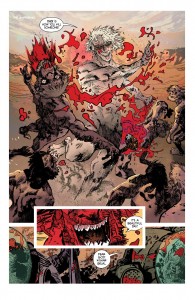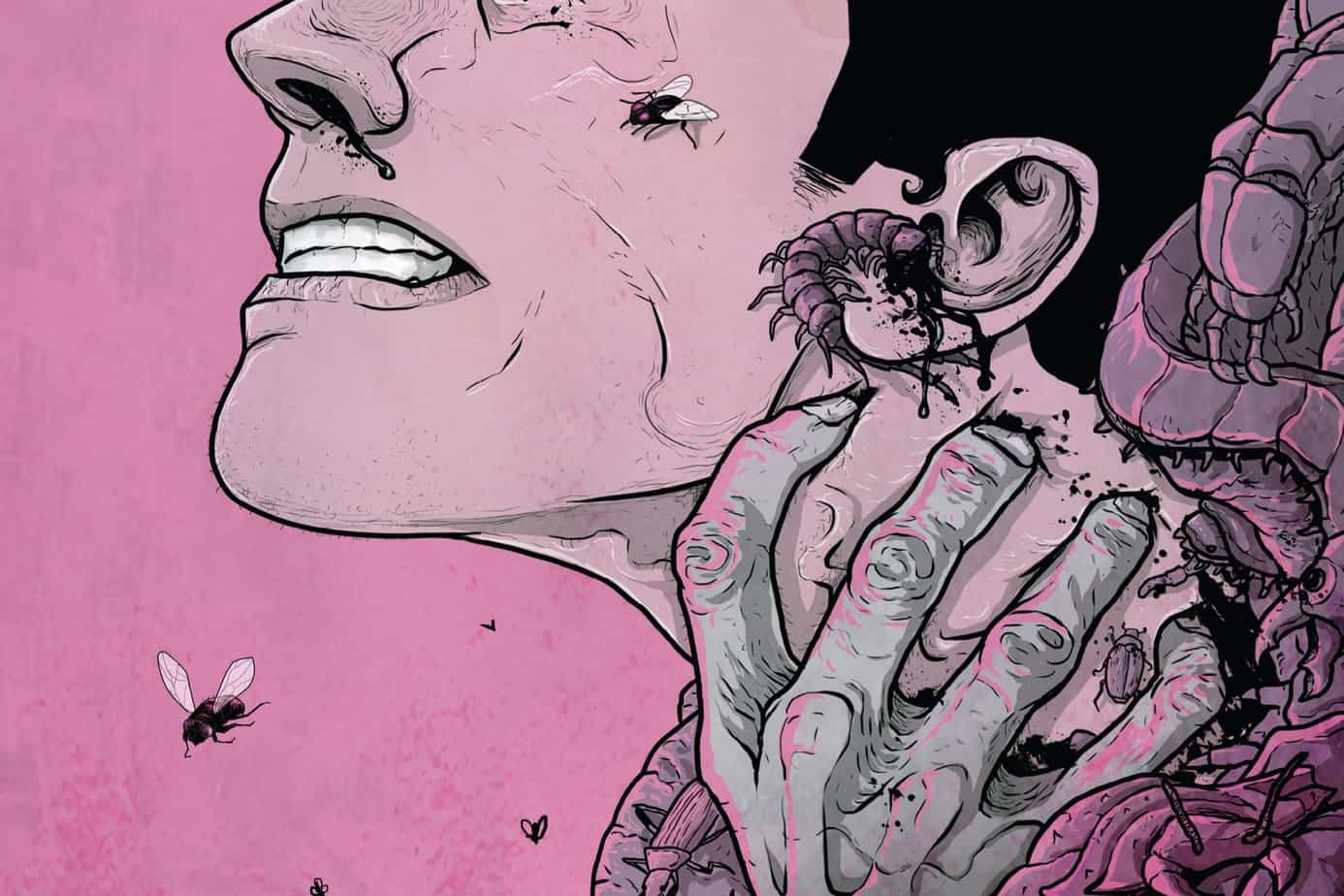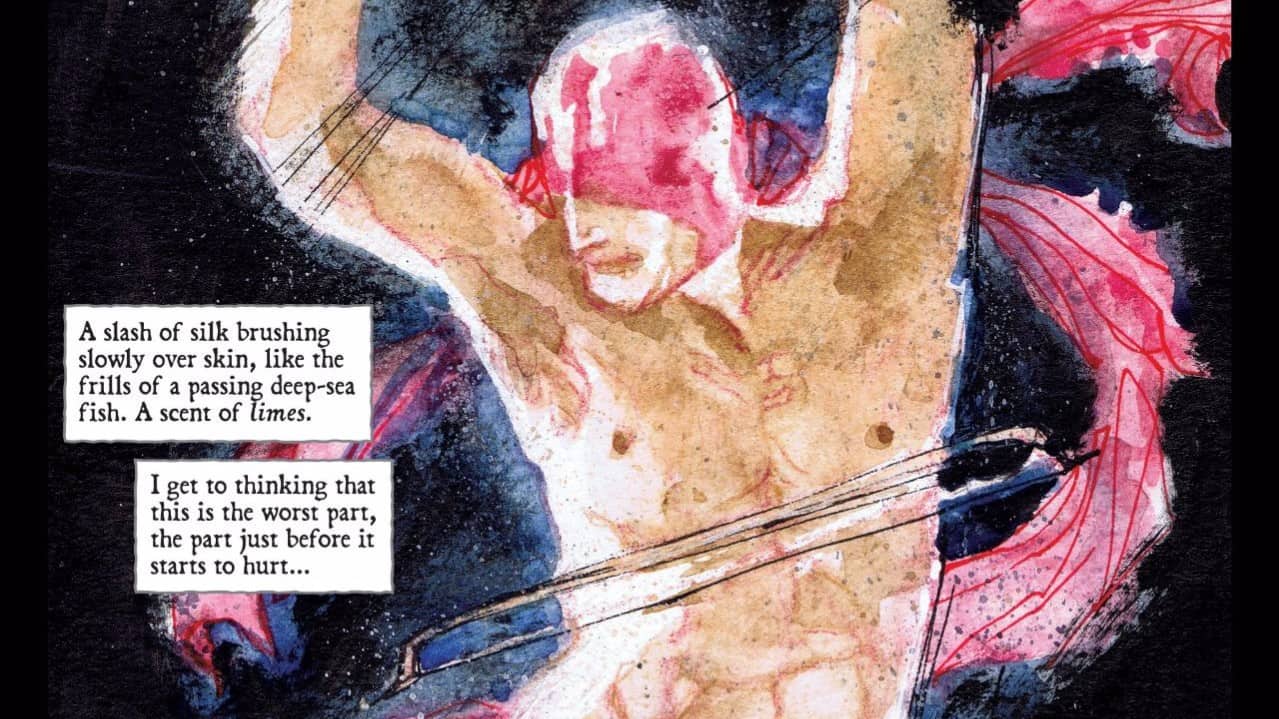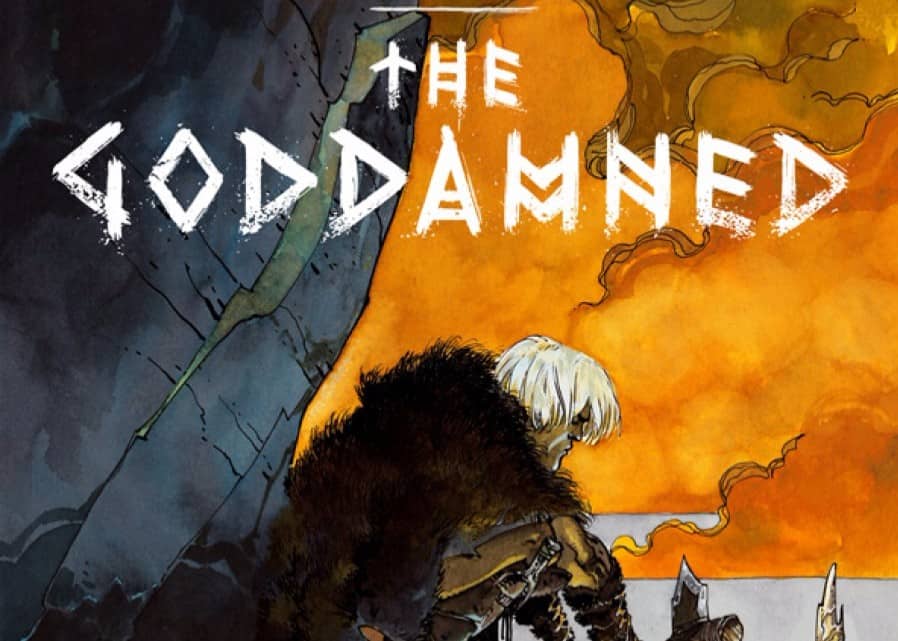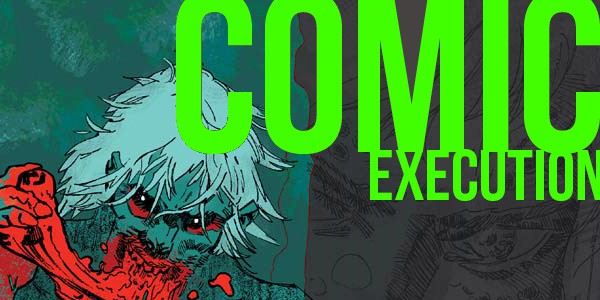
[Comic Execution] Interview – Steve Orlando, UNDERTOW
After a critical review of the second issue of his Image Comics debut, UNDERTOW writer Steve Orlando got in touch with me to give me feedback on my review. Now that issue 3 is out (as well as my review), we sat down to talk about the series so far.
Comic Execution: The concept of UNDERTOW is, simplified, “What if Atlanteans encountered primitive humanity?” But the story itself is much more universal, having more to do with the meaning of freedom. Did the latter follow the former or were they conceived separately?
Steve Orlando:
I think that one followed the other. Once we got to thinking about the Atlanteans having a high tech adventure in a primitive setting on land, I got to thinking about what I could compare this to in our own human history. And I realized the Atlanteans are not just explorers, they’re pioneers, they’re pilgrims. Once I realized that, I knew I had to think about freedom, since that’s what pilgrims and pioneers were hunting. They were living in new, unexplored, dangerous worlds in order to escape persecution.
That’s our heroes, living knee deep in danger because that’s the sacrifice they make to live how they want to live, free of Atlantean greed, corruption, and homogenization. So often we have characters searching for freedom, and that’s the end of the road. But what happens when you get there? What is life like? it’s not like sailing into the west, passing through the gates of heaven, it’s still life. And bad things can still happen, sometimes more than usual. And when you have a group of thousands, it just stands that they wouldn’t all be looking for the same thing, wouldn’t all understand freedom the same way, even if they think they do. The struggle to make that work is just as much of a fight as the struggle for the Amphibian’s blood. People say “freedom isn’t free” but really “freedom doesn’t mean safety” is what our characters have learned. They’ve left civilization to build their own, but now they contend with nature and the untamed forces just to live another day.
UNDERTOW, as a word, indicates a current of alternating direction or increased strength beneath surface movements. I see the most significant representation of this in the comic with Anshargal’s separationist movement, but in the latest issue we see how oblivious the Atlanteans are to the potential danger the land-dwellers pose, though Anshargal almost recognizes it. Is there a deeper “undertow” at play than the rapidly changing relationship between the two worlds?
Steve:
The true fight in UNDERTOW may be within the characters themselves, and I think that’s symptomatic of what you’re saying. Of course we have big monster fights too. But these people are wanting to build a new life, but as they worry, maybe they’re just building a new Atlantis. They do underestimate the feral humans, because maybe they’re just as self centered as the people they are escaping! But Anshargal, Zikia, they know this, and hope to steer them away. Zikia and Anshargal know their place in the scheme, and the hope is that by study and education and cultural immersion they can show the citizens as well. But again I think that’s humanizing. We all think we’re immortal, right up until we’re not. And that ESPECIALLY goes for youthful idealism, those high school times when we have big ideas and talk about making change in ways that have been said so many times before, but it seems fresh and new because its you. There’s an inherent self centrism in idealism or activism, it’s necessary, in order to think you can make a change. So our characters are focused on that, but hopefully not so much that they can’t see the enemies hiding in the kelp forests.
Anshargal’s got a lot of ink. Any stories behind any of them?
Steve:
The ink is key! Just wait until issue 4! But yes Atlantis has a tattoo culture, similar to the way tattoos work in the Russian prison system, where people’s stories are written on their bodies. Artyom was instrumental in this idea, and I loved it as soon as he mentioned it! So when you join the Deliverer, you have to have most of your tattoos removed to start anew. But Anshargal has left his there as constant reminders to his old life and his old losses. They’re his fuel, constantly reminding him where he came from.
UNDERTOW successfully balances the cerebral and the thrilling; early on, the battle with Atlantis has roots in the relatively complex ideological and political motivations of Anshargal’s rebellion. While there are several isolated action scenes that develop characters and fill in background, issues two and three split the narrative into high-stakes political drama aboard The Deliverer and Anshargal’s unforgiving adventure into the above world. Did this well-executed segregation of drama and action happen as an inevitability with the need to say more, is this a way of playing with narrative form, did it come about as the result of collaboration?
Steve:
I think it’s both the need to say more and a result of collaboration. From the outset we wanted to show that the fight for survival was not just one that involved punching and kicking, but that there were more subtle enemies as well. With Anshargal out fighting the big picture fight with good intentions and tunnel vision, realistically that’s when the subversive tensions would bubble up, with the perceived weakness of Bau Zikia. But as we’ll see she has a strength of a different kind that is maybe even more intimidating. Because when it comes to shows of strength, less is more. Look at Hannibal Lecter, 16 minutes of screen time, decades of influence. It just seemed like the perfect time for the other side of the Deliverer’s leadership to shine.
But it also comes from collaboration, because Artyom is constantly designing more and more unique faces for the crew of the Deliverer. He wants to fill the world with individuals, not stock characters. So the more and more we talk about the little stories and attitudes of characters that may not have even had, or may never have speaking roles in the book, I wanted to find a way to showcase them and give his designs a chance to shine.
The Amphibian is one of those antagonists that I personally hate to love. With all the build-up that led to his introduction, he certainly made a splash. Was there an intent to make him both horrifying and attractive or is the latter simply the result of both the mystery and the sense of power that he wields, in multiple senses?
Steve:
I am glad to hear he’s horrifying and attractive! That was definitely an intent. It’s a grotesque version of our obsession as a culture with sex and death (read: vampires). He’s primal, raw and brutal, but also magnetic. We have this base fascination with primal forces, whether they be good or evil (much better man than me Bryan Fuller is delving into this on Hannibal as we speak). So Gelal is in some ways like Mark Millar’s original Ultimate Hulk. He’s not just angry. He’s every base emotion, he’s a bit of id, and a bit of insane. But we cannot turn away. And his flippant nature puts into stark contrast Anshargal’s serious take on life. With great power, really, comes no responsibility. I think someone’s joked on that before, but it’s never more true than here. And that’s Anshargal’s plan, to introduce some responsibility, if he can.
Let’s talk about your crowd-funded comic, ‘Virgil’ for a moment. I haven’t read it (yet) but it sounds so much like something I couldn’t have imagined being real. One of the things that excites me the most about it is that it’s a crime drama with a queer protagonist, rather than a queer drama with some suspense in the mix. Besides personally favoring an equal blend of drama and action myself, I see ‘Virgil’s genre roots being a way to invite more casual readers into a tale that prominently features queer themes. Do you ever get concerned about condescending to the audience when dealing with these topics? On the same note, in light of DC and Marvel putting their brightest queer characters back in mothballs (‘Stormwatch’ & ‘Young Avengers’), does it feel like they’re backpedaling to avoid backlash or is this just part of the cycle?
Steve:
I don’t worry about it, honestly. At least when it comes to Virgil. And that’s mainly because we’re trying to hard with Virgil to not use idealized characters. Often this is looked on poorly, featuring characters that were once in the closet, or are not model citizens otherwise, but that’s the world. People ARE in the closet, and people DO live in the gray areas. So we aren’t preaching. We’re using the fact that the story doesn’t fetishize or make a big deal of the characters’ sexuality as, in fact, the statement the story is making. We have queer themes and we have queer terminology and idioms, but we don’t stop the story to explain them or harp on them. The story comes first, and in our minds that’s respectful to the characters. We’re not making a carnival of their lives, we’re treating them equally. And after all isn’t that what we all want?
I can’t comment on what’s happening at Marvel and DC, well I could, but it would be pure speculation. But I don’t think any movement of characters was to avoid backlash. In the case of Stormwatch, the character moves while the book existed in fact made it a bit more aggressive, hypothetically, from turning Apollo and Midnighter back into a couple courting each other instead of a safer, more heteronormative married couple. Not that either depiction is poor, but if we’re talking about backlash, one is safer. I think you’ll see more LGBTQ characters coming up in the future as well, most everything in comics, as you said, comes in cycles.
Reading what you posted about ‘Virgil’ on the Kickstarter brought to mind a few highly underrated stories that took crime fiction and explored what it would look like in more unorthodox locales, with unusual protagonists; ‘Winter’s Bone’ and Joshua Dysart’s ‘Unknown Soldier’ both came to mind right away. But I couldn’t recall anything with an openly queer protagonist, though I know a few of Vito Delsante’s ‘Steel City Noir’ tales have LGBTQ characters. What am I overlooking?
Steve:
Well, of course there’s Batwoman. And Steven T Seagle’s American Virgin had a supporting character that graduated to lead that was FTM. I also liked how The Wake recently featured incidental gay characters, just as if it were as normal as any other relationship talk in the book. That, to me, is real progression, where we have LGBTQ characters appearing in an issue and it’s not “a very special issue” or whatnot. And of course there’s Gotham Central with the Renee Montoya lead stories. And actually, Josiah Power, one of the leads from Kurt Busiek and Tom Grummett’s Power Company was an early 00s matter of fact portrayal of a gay lead.
It’s easy to imagine any number of new ongoing Image Comics titles as TV shows/miniseries: ‘Pretty Deadly’, ‘Ghosted’, ‘Deadly Class’, etc. UNDERTOW is so ambitious as to seem nearly unfilmable, at least as a live-action venture. With your experience so far, does it seem like the comics industry right now is looking to be TV/movie marketable and is UNDERTOW in spite of that or just business as usual?
Steve:
Well that’s tough. Because these days cross media stuff IS business as usual. But I think on the whole comics are still shooting to be great comics, and anything else is gravy. That’s what I like to hope and I know everyone I’ve met just plain loves comics. With Undertow we definitely set out to use the unlimited budget of the comics page and go long, so to speak, on crazy visuals and action sequences. Just imagine, you haven’t seen the mammoths yet! So it’s not in spite of anything, but out of a love of just how special comics are that Artyom and I are shooting for the fences. The conversation is always about how we can make something crazier and more ambitious, give you guys something you’ve never seen before.
I usually like to queue up appropriate tunes for the comic I’m reading. When I’m reading UNDERTOW, I need stuff that is epic (because of the story), psychedelic (because of Artyom’s art) and a bit rough around the edges. I usually end up going with CYNIC’s “Traced In Air”, Russian Circles’ “Empros” and Vaura’s “Selenelion.” Any suggestions, regardless of my own tastes?
Steve:
I can’t give up all my secrets, can I? It’s interesting you ask this, because yes, actually, early on in production I emailed Artyom and told him I was just digging on one artist in particular to sum up the tone of the series, and he agreed. Turns out, he was into this guy too! And you may have picked it up by the chapter titles already, but the main music influence of Undertow is Nick Cave & the Bad Seeds. Looking for the mix of horror, shock and awe, and sleazy cool? That’s where you’ll find it.

